
Industry and Development
Since its inception at the end of the 1800s, people have been fascinated by the humble automobile - but there’s nothing humble about it. The means to transport yourself wherever and whenever you choose has been a problem for as long as anyone can remember.
Being able to cover large distances quickly and efficiently enables us to spread beyond the confines of our immediate locality, which is extremely important when choosing where to live. If you have to depend solely on what’s in your backyard you will likely find yourself having to move quite often.
Transportation is the key that removes the necessity of being nomadic, and can instead settle on a location and travel quickly to where we need to go to get what we need and bring it back – or even easier, have it come to us.
The solution we came up with has worked as intended marvellously well. It enabled a small group of people to be transported to their chosen destination with the only requirement being a few litres of fuel. It brought the end of the need to use and keep horses to travel anywhere further than a few miles.
This solution however, didn;t have much foresight. As populations continued rise faster the inherent problems with the automobile become ever more apparent.
The worlds roads have become increasingly more crowded making travel by car less and less time efficient, and the effect the burning the fossil fuels they run on and the harvesting of natural resources has had on the environment has been devastating.
Manufactures have strived to address these issues, constantly refining their designs to make cars more efficient and less polluting, but that hasn’t curtailed the demands of us consumers. We have constantly demanded more from our vehicles, increasing their size significantly and leading to even greater quantities of materials and resources being used in their manufacture and operation.

Mass Market
Like most new and complicated things the automobile was originally the reserve of the wealthy, and seen as a more of a novelty by those who bought them rather than a serious alternative method of transportation. As designs improved and the benefits of automation became more obvious, car ownership started to be taken more seriously.
It took Henry Ford to truly change who could buy them. Ever since the Model T was created and he succeeded in perfecting their production process to take them from building 10,000 vehicles per year to almost a million in a little over a decade, the automotive industry has catered for the masses as well as the wealthy.
Building cars in numbers originally thought to be impossible, the collective output of the worlds automotive manufacturers totalled almost 100 million last year. Production has been recovering since the sales the economic crisis of 2009.
Top vehicle producing countries (2016 data):
1. China - 28,119,000
2. USA - 12,198,000
3. Japan - 9,205,000
4. Germany - 6,063,000
5. India - 4,489,000
6. South Korea - 4,229,000
7. Mexico - 3,597,000
8. Spain - 2,886,000
9. Canada - 2,370,000
10. Brazil - 2,156,000
11. France - 2,082,000
12. Thailand - 1,944,000
13. UK - 1,817,000
14. Turkey - 1,486,000
15. Czech Rep. - 1,350,000
16. Russia - 1,304,000
17. Indonesia - 1,177,000
18. Iran - 1,165,000
19. Italy - 1,104,000
20. Slovakia - 1,040,000

Controlling Interest
This production is controlled by a surprisingly small number of corporations, many of which have only formed in the last decade as manufacturers had to merge to survive. Efficiency and price are key in an economy strangled by recession and subsequent austerity, and those that could not stay competitive on their own found allies to partner with.
14 major conglomerates now control over 60 automotive brands scattered across the globe. Although the practice of part sharing and the rebadging of entire models has long been present in automotive sales strategies, it has become increasingly common in the modern era as a result of this multiple brand ownership and wide spread project partnership.
The largest of these groups is Volkswagon, who control a significant number of high profile brands. Toyota is not far behind, and to their credit are almost hitting the same production numbers off of just three badges as Toyota continues to be the best selling car brand on the planet. The Renault-Nissan Alliance now includes Mitsubishi too, and makes up the third largest manufacturer.
Top selling brands in 2018:
1. Toyota - 8,091,277
2. Volkswagon - 6,746,204
3. Ford - 5,329,290
4. Honda - 4,966,037
5. Nissan - 4,750,863
6. Hyundai - 4,076,913
7. Chevrolet - 3,881,747
8. Suzuki - 3,046,585
9. Kia - 2,638,782
10. Mercedes-Benz - 2,551,806
Top 3 selling manufacturers in 2018:
1. Volkswagon Group - 10,810,349
(VW, Audi, Porsche, Lamborghini, Bentley, Bugatti, Skoda, Seat)
2. Toyota - 10,435,420
(Toyota, Lexus, Daihatsu, Scion)
3. Renault - Nissan - Mitsubishi Alliance - 10,346,982
(Renault, Nissan, Mitsubishi, Datsun, Infiniti, Dacia, Lada, CMC, ZNA)
-
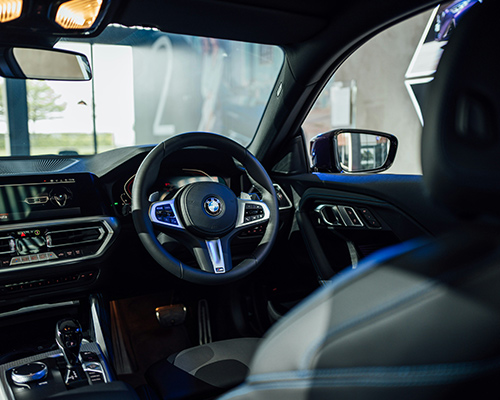
Over The Air Software Updates: What Are They and Do They Really Increase The Value of Your Car?
12th Mar 2025
Read More -

MAT Foundry Sponsor Premier League Fixture
26th Feb 2025
Read More -

Ferrari's First Fully Electric Car: What We Know So Far
19th Feb 2025
Read More -
Casting Industry Awards Dinner 2024
17th Dec 2024
Read More -
MAT Foundry Group Makes Its Debut at Automechanika Shanghai
17th Dec 2024
Read More -
Celebrating Loyalty: Eurac Poole's 18-Year Service Dinner
17th Dec 2024
Read More -
Strengthening Partnerships at GIFA Mexico: Preparing Pachuca for 2025
21st Nov 2024
Read More -

No Rear Window... No Problem! The Groundbreaking Polestar 4 Is Coming To The UK
12th Nov 2024
Read More -
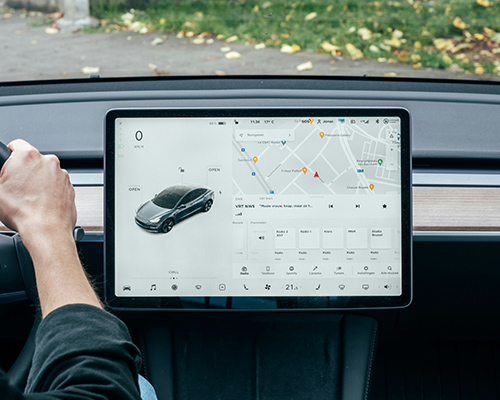
The Rise of The In-Car Payment Market (And What It Means For Drivers)
7th Oct 2024
Read More -
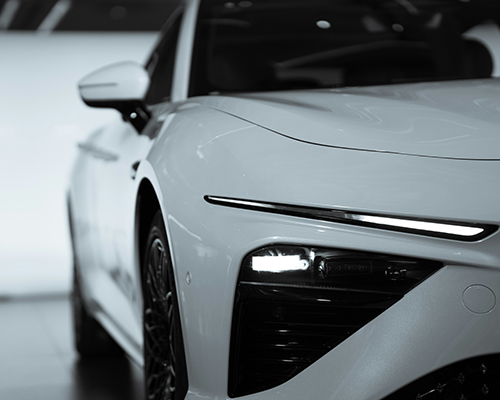
Revealed: The Fastest Electric Cars In The World
12th Sep 2024
Read More

Big Business
Big Business
Despite the recession and subsequent upheaval, automotive remains one of the most important industry sectors in the world - both in terms of the revenues it generates and the number of people it employs.
The latest global employment stats based on outdated 2005 data put the total number of people employed by the automotive industry across the world at over 8 million – and assumed the 66 million vehicles produced that year were matched.
Maintaining that level of employment with 2017 production stats would put the estimate today at over 12 million people being directly employed in the manufacture and supply of vehicles. It is also calculated that these jobs support a further five more in associated industries – which amounts to another 60 million employment positions.
Employees involved in automotive manufacture by country:
1. China - 1,605,000
2. USA - 954,000
3. Germany - 773,000
4. Russia - 755,000
5. Japan - 725,000
6. Spain - 330,000
7. France - 304,000
8. Brazil - 289,000
9. India - 270,000
10. South Korea - 247,000
11. Turkey - 231,000
12. UK - 213,000
13. Italy - 196,000
14. Thailand - 182,000
15. Canada - 159,000
16. Sweden - 140,000
17. Mexico - 137,000
18. South Africa - 112,000
19. Czech Rep. - 101,000
20. Poland - 94,000
These figures make the automotive industry crucial to the economies of countries that operate significant production facilities. In the UK alone the industry turned over £71.6 billion in 2017, and they only rank 13th in production figures - 1/16th that of China.

Inevitable
The next ten years promises to be some of the most revolutionary in automotive history. The joint ventures of developing driverless technology and the electrification of the automobile will bring about changes on a scale never seen before.
Each on their own is hugely significant, but the connection they share in the way the technologies are implemented and the reasons for doing so has seen them developed in tandem – at enormous cost. Almost every major manufacturer is invested in some way in the development of these new technologies, with some having dedicated billions to achieving this goal.
Electrification has been a long time coming. The technological principles for replacing combustion engines has existed for over a century if only the will was there to refine the technology to a level where it would be a feasible replacement for fossil fuels.
There will be some debate over what has finally prompted the change to happen, but one reason that can no longer be ignored is the damage being done to the environment and the need to do something about it.

Environmental Impact
Transportation is responsible for 15% of global greenhouse gas emissions, which represents close to 15 trillion tonnes of carbon being released into the atmosphere every year. Replacing combustion engine vehicles with electrically powered ones will help reduce this amount significantly, although even they in themselves are not perfect.
The electricity they run on still has to be generated from somewhere, namely power stations, and the increased demand will necessitate the building of more of them. However, this at least provides the option for how that power is generated - without having to resort to fossil fuels.
If renewable energy sources can be harnessed as the rise in demand from electric vehicles happens, that truly would be a success for the planet. As progress is now picking up pace and not slowing down, decisions need to be made now about the future.

Resource Management
When the tipping point finally comes it will be felt across the globe in a multitude of industries, not just the automotive sector.
The supply of natural resources is going to experience some turbulent times as changes in demand for certain metals will accompany new technologies and production processes.
The raw materials needed for batteries is already becoming a bit of a battleground as manufacturers attempt to forecast demand into their plans. The impossibility of this task is all too apparent as new technological developments are rapidly emerging - some that promise better and more efficient batteries using previously inadequate elements or techniques.
A patent for a Lithium-Iron-Oxide battery has recently been filed which replaces expensive cobalt with much cheaper iron. This reduces the cost of the batteries so significantly it would drop the prices of electric vehicles back in line with fossil fuelled cars. The power capacity of this new battery is also improved meaning you either need less of them, saving more weight, or could travel further before recharging, making EV’s more practical
It’s quite possible for cobalt prices sky rocket during the early stages of electric vehicle phase in as manufacturers scramble for the necessary raw materials, only to plummet again once this new battery tech is fully tested and implemented in later models.
You can almost guarantee fortunes will be won and lost before the dust settles.

Automation
As manufacturers continued to develop ever more sophisticated systems capable of controlling increasingly complex aspects of automobile control, the need for a way to categorise the overall capability of driverless systems became apparent.
Amid the accelerating shift towards driverless technology, in 2014 The Society of Automotive Engineers (SAE International) developed a classification system to enable manufacturers to define the systems they were incorporating into their vehicles:
The Society of Automotive Engineers (SAE) defines the levels of automation as the following:
- Level 0 – No Automation
- Zero autonomy, the driver performs all driving tasks.
- Level 1 – Driver Assistance
- Vehicle is controlled by the driver, but some driving assist features may be included in the vehicle design.
- An advanced driver assistance system (ADAS) on the vehicle can sometimes assist the human driver with either steering or braking/accelerating, but not both simultaneously.
- Level 2 – Partial Automation
- Vehicle has combined automated functions, like acceleration and steering, but the driver must remain engaged with the driving task and monitor the environment at all times.
- An advanced driver assistance system (ADAS) on the vehicle can itself actually control both steering and braking/accelerating simultaneously under some circumstances.
- Level 3 – Conditional Automation
- Driver is a necessity, but is not required to monitor the environment. The driver must be ready to take control of the vehicle at all times with notice.
- An Automated Driving System (ADS) on the vehicle can itself perform all aspects of the driving task under some circumstances. In all other circumstances, the human driver performs the driving task.
- Level 4 – High Automation
- The vehicle is capable of performing all driving functions under certain conditions. The driver may have the option to control the vehicle.
- If an Automated Driving System (ADS) on the vehicle is performing all driving tasks and monitoring the driving environment, the human need not pay attention in those circumstances.
- Level 5 – Full Automation
- The vehicle is capable of performing all driving functions under all conditions. The driver may have the option to control the vehicle.
- The human occupants are just passengers and need never be involved in driving.
As a comparative example, the much vaunted Tesla Model S currently operates at only level 2. As level 3 is significantly more complex than level 2 there is a lot of progress to be made before fully autonomous driving is achieved at level 5, although some manufacturers have developed level 3-4 prototypes.
Assisted driving systems are already present in a large number of car models, and level 2 autonomy is becoming increasingly more common. It is forecasted that fully autonomous driving will be realised by 2025.

Tech Takes an Interest
Working towards making this a reality are some of the biggest companies on the planet – and it’s not just the automotive companies. The nature and complexity of the technology has meant some of the largest tech firms are also heavily involved and heavily invested.
The potential market value is almost certainly an enticing factor – with the driverless car market estimated to be worth up to £1 trillion within the next two decades. Having a ready to deploy self-driving software system capable of being licensed to manufacturers would account for a significant proportion of that sum.
Of these tech firms, they don’t come much bigger than Google and Apple, both of whom have self-driving interests:
Google’s driverless car project, now a separate entity called Waymo, has been developing its ideas since 2009 having so far spent $1.1 billion up until 2015. They’ve conducted extensive testing, racking up over 5 million real test miles, and have tested across numerous models including their own pods as well as other manufacturers vehicles. Their aims are stated as being to develop technology that has applications in personal vehicles, ridesharing, logistics and public transport. Their interest seems to be focused primarily on developing the software, and using it in third party vehicles.
Apple have lacked some direction as they flit between developing an entire self-driving vehicle (and the associated manufacturing issues that comes with that) and the comparatively simpler task of only developing the software as a platform for other vehicles. They are fast approaching the point where they will have to make a final decision, but the issues facing Apple aren’t solely limited to development. Their entire business ethos is in opposition to how the driverless car market would work, particularly with regards to the way they vertically integrate their products and limit versatility by segregating it away from other formats – as well as the short support lifetime they provide on their products before declaring them obsolete. Compromises would have to be made one way or the other.

Automakers
The established automotive giants haven’t stood still while the tech firms have been busy. There are varying levels of progress, with some having set rough dates for when they believe they will have a product ready for release, whereas others seem to be lagging behind.
General Motors - GM have made no secret of the fact they see driverless cars as a big part of their future, and have invested some staggering sums of money into making it happen. They acquired Cruise Automation for $1 billion in 2016, and have since invested $500m in ride hailing service Lyft, as a rival to Uber, and a further $1 billion in a self-driving test centre in Detroit. If GM somehow fail in their efforts, they cannot be accused of not spending enough on the project.
Ford - One of GM’s rivals have also put a lot of effort into their driverless car program and have actually committed to a date as close as 2021 to have a fully autonomous car for sale, with no steering wheel or pedals. If Ford are as close they claim perhaps the reason GM are throwing such serious sums of money around is in an effort to catch up. Curiously Ford are partnered with the now part GM owned Lyft.
Renault-Nissan-Mitsubishi Alliance - Beating Ford in the race to release, Nissan have plans to sell fully autonomous cars as soon as 2020 – but with their capabilities divided into stages, presumably to buy them more development time. The first stage will be autonomous driving in slow moving traffic only, meaning the driver must be poised to take control at any moment. Whether this counts as ‘fully autonomous’ is tenuous at best, and much less impressive than if Ford manage to follow through on their ambitions.
Renault recently released a concept car that they claim achieves level 4 autonomy – but as part of their vision of the future range for 2030, go figure.
Tesla - Problems continue to circle the company, who to their credit have been a driving force for both electric vehicles and self-driving technologies despite being a small and relatively inexperienced manufacturer. Their production issues are well known, but they are still at the cutting edge of development and could even have a fully autonomous vehicle ready within a year - which would be a remarkable feat. Whether anyone could actually get hold of one is a problem for another day.
Toyota - Toyota matched GM’s investment in a test centre by building one of their own for the same price of $1 billion. They have stated they will have a vehicle capable of autonomous highway/motorway driving in 2020.
Volvo - Volvo have the distinction of being the first manufacturer to accept liability in the event of a crash involving one of their cars driving itself. As a brand that relies on its safety record this was a clever move for the Swedish firm and reinforces the trustworthy image the brand possesses.
Volkswagen Group - Through its Audi badge, the group has developed a Level 3 autonomous car. Unfortunately the technology isn’t road legal yet so until legislation catches up owners can’t use it. Notably, the group has also focused on road infrastructure technologies alongside its vehicle tech, which will play a significant role in bringing self-driving cars to the worlds roads.
Kia - Like Ford, Kia have also planned to introduce autonomous vehicles by 2021 at a level 4 capability. The problem is the firm is still investing now, albeit up to $2 billion, and hasn’t even started public testing yet. A lot of catching up to do it seems.
Honda - Despite its size Honda are lagging behind a little with their release dates, with a level 4 car planned in the comparatively distant year of 2025. This may be down to their different approach to other manufacturers, by wanting to apply the new tech across their range from the beginning instead of only in a few flagship models. This would put them in the interesting position of potentially being late to the market, but making a huge splash when they arrive. They are still at least targeting 2020 for highway/motorway autonomy.
There are of course numerous other firms working on the technology too, whose efforts will become better known as we move closer to the window of release the industry has set.

Zero Hour
As that time rapidly approaches, naturally more thought will be given to how the impending changes will affect us. Some changes can be predicted, but it’s almost certain there will be developments which will have never been envisaged, or admitted.
Driverless car technology at the very least is guaranteed to change the way the world travels, sooner or later. The only unknown is how quickly these changes will spread, as much depends on how successfully costs can be lowered to make the vehicles attainable.
The greater is question is what else is going to change as society adjusts to its new creation - as once the technology does takes hold it has the potential to change everything.
It will change how cars are used, owned and perceived. It will change where we do things and change our home lives as a result. It will change where we eat, where we spend our time, where we spend our time with each other. It will change where we go, who we see, and how often we see them.
It’s quite feasible that cars will become extensions of the home, as we become increasingly prepared to spend more time in them and not see it as time wasted. No longer a seat to be strapped into and endured, but a space to be used and enjoyed, allowing everyone present to engage with each other fully, instead of minimally. The car becomes a room that just happens to take you where you need to go too.
Connecting what you do in your car and what you do at home or work will become increasingly important, and is likely what the big tech firms are now working on even now - to provide a seamless transition as you move between environments.
In a world where we are constantly pressured for time, the effect of the time gained would be quite transformative, and free people to enjoy more of their lives – or cram more in. Habits and routines will be broken, and new ones created in their place.
At the same time, the switch to electric power will make a positive difference to the lives of millions of people living in congested cities as smog is drastically reduced and the quality of air we breathe is improved.
The streets will be cleaner as the fine black carbon dust from emitted from exhausts will no longer be gathering at curb sides, and the quieter noise emitted by electric vehicles will reduce noise pollution.
The automotive industry is facing a time of unprecedented change, but let’s not forget that so are we as poeple. It’s not often something this transformative happens, and ensuring we take advantage of the opportunity and change things for the better is critical.
Hopefully everything that happens will all be for the good and we can look back on this time as the turning of the tide.
MAT FOUNDRY GROUP ARE A LEADING MANUFACTURER OF GREY AND DUCTILE IRON CAR COMPONENTS. TO LEARN MORE ABOUT US VIEW OUR PRODUCTS OR CONTACT US TODAY

News and blogs
-

Over The Air Software Updates: What Are They and Do They Really Increase The Value of Your Car?
12th Mar 2025
Read More -

Ferrari's First Fully Electric Car: What We Know So Far
19th Feb 2025
Read More -
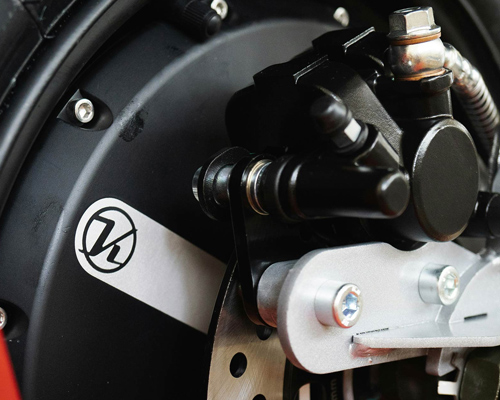
The Future of Brake Calipers: Innovations and Trends
27th Jan 2025
Read More -

How Often Should You Replace Your Brake Calipers?
27th Jan 2025
Read More -
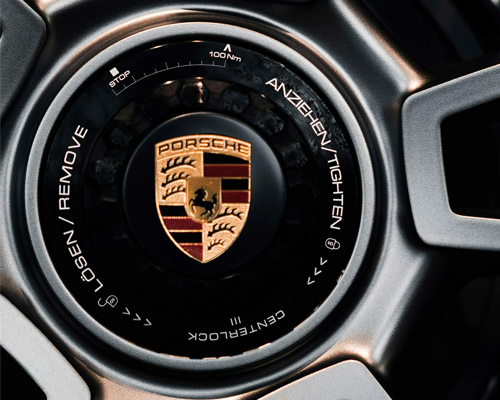
How to Choose Brake Calipers for High-Performance Vehicles
27th Jan 2025
Read More -

Best Brake Calipers for SUVs and Trucks
27th Jan 2025
Read More -
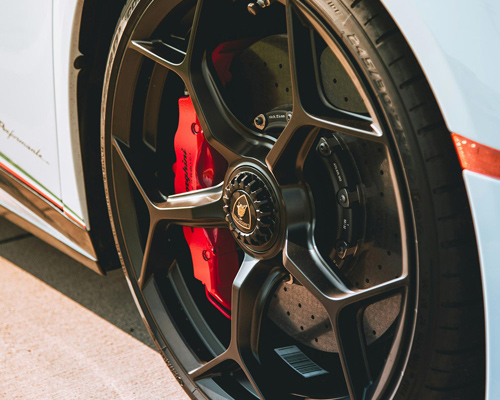
How to Replace a Brake Caliper: Step-by-Step Guide
27th Jan 2025
Read More -
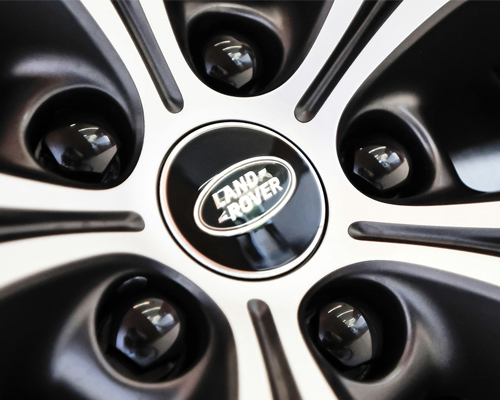
How to Spot a Worn-Out Brake Caliper
27th Jan 2025
Read More -

Common Causes of Brake Caliper Failure
27th Jan 2025
Read More -

Why Floating Brake Calipers Are the Preferred Choice for Most Cars
27th Jan 2025
Read More





